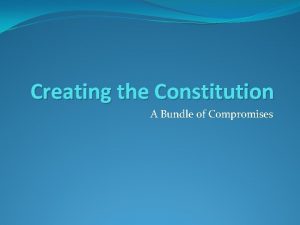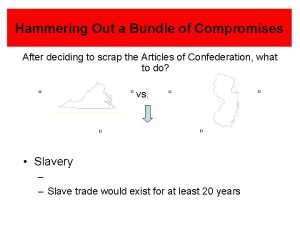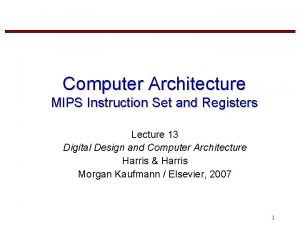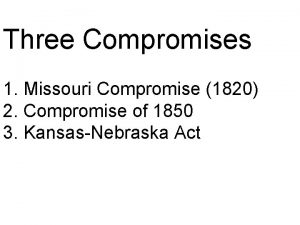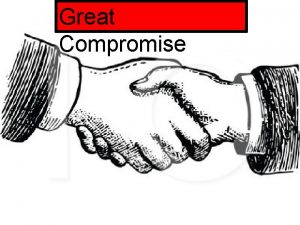Key Compromises Compromise Issues Solution 1 GREAT COMPROMISE





- Slides: 5

Key Compromises Compromise Issues Solution 1. GREAT COMPROMISE Representation “Bi-Cameral” House- population Senate- 2 2. 3/5 th Compromise Counting slaves in population for representation 3/5 of one person counted (tax+ Representation) 3. Commerce/Slave Trade Regulate foreign/interstate trade Congress could not tax state exports or take action against slave trade four 20 years

Who was there? Ø Washington: President of convention Ø James Madison Ø Ben Franklin Ø Alexander Hamilton- Nationalist from NY Ø Jefferson and Adams- missing from convention because diplomats in Europe Ø Pat Henry- refused to attend because a strong National Government scared him Ø Not present were- women, Native Americans, blacksbecause they had no political rights

Articles of Confederation • TOO WEAK- states had too much power • May 1787: Constitutional Convention in Philadelphia • All Delegates sent to Amend the Articles • ended up writing a Constitution

The Great Debate: n Must approve Constitution for ratification 9/13 n Federalists: favored Constitution n strong national government to provide order and protect people’s rights n Anti-Federalists: favored a weak national government n Felt threatened because of natural rights of people were not protected n *** ADDED THE BILL OF RIGHTS**** to protect the people

Articles of Confederation vs. Constitution 1. states have no power Federal government most power States have some >FEDERALISM 2. No Executive officer President and Executive Branch 3. No National Courts only state court Both National and States Courts 4. Congress is responsible to the states Congress is responsible to the people 5. 9/13 approve law Majority in both houses 50%+1 6. Congress- no power to tax Can tax 7. Not regulate Trade Regulates interstate trade 8. State currency- each state had different money National Government currency- all states have same money

